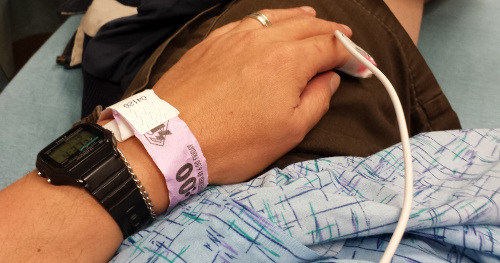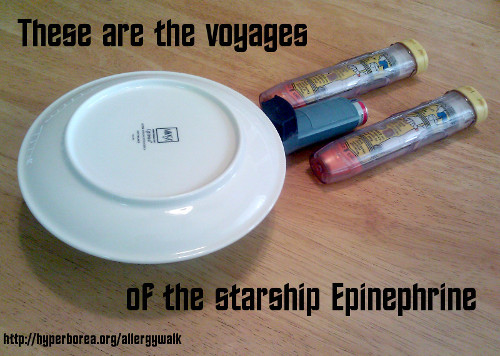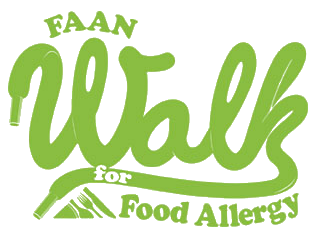 If you’ve been reading Speed Force for more than a year, you’ll remember that each fall I participate in the Walk for Food Allergy. Last year, Speed Force readers helped me raise over $1000 for food allergy research, awareness, education and advocacy.
If you’ve been reading Speed Force for more than a year, you’ll remember that each fall I participate in the Walk for Food Allergy. Last year, Speed Force readers helped me raise over $1000 for food allergy research, awareness, education and advocacy.
Food allergies are a serious health problem, faced by over 15 million people in the US alone. Severe anaphylactic reaction is a life-threatening emergency. Swelling can prevent breathing, a drop in blood pressure can cause loss of consciousness, and it can even trigger cardiac arrest.
Experience
I’ve experienced this first-hand. I left Comic-Con in an ambulance after two sips of flavored coffee that, unknown to the staff at the coffee shop, contained peanuts in the mix. I spent the rest of the afternoon in the emergency room.
I was lucky. Just one week later, a thirteen-year-old died under similar circumstances: while on vacation with her family, she took a bite of something she expected would be safe but recognized the peanuts immediately. She took medication and thought the reaction was under control, only to have it hit harder half an hour later. She never even made it to the hospital.
A simple label would have been enough to prevent both of these incidents. “Mexican Mocha (contains peanuts)” or “Peanut Butter Rice Krispie Treats.”
Walking on Eggshells
We still don’t know what causes allergies, which means we can’t prevent them. The hygiene hypothesis is gaining traction, but it’s far from settled, and advice to parents as to when to introduce high-risk foods is all over the map. We can’t cure them yet, either, though desensitization treatments at starting to show some promise.
For now, those of us who live with severe allergies just have to avoid our triggers as best as we can, and carry those emergency auto-injectors everywhere.
If you know someone who has food allergies, you can help by knowing what’s in the food you serve, using separate utensils and dishes for preparation (if you make a PBJ with one knife, you’re going to get peanut butter in the jelly jar, making the jelly unsafe), and letting them know if you plan to substitute an ingredient.
Support FARE
You can also help by donating to FARE*, an organization dedicated to food allergy research and education. They fund research into identifying the causes of allergies and finding treatments. They provide training materials for the food industry. Over the last few years they’ve been pushing for stock epinephrine in schools, since many allergic children experience their first anaphylactic reaction at school, before they’ve even been diagnosed with an allergy. This year they’ve also been trying to combat allergy-related bullying.
Please sponsor me in the walk. Your donation will help FARE work toward long-term solutions through research and more immediate solutions through education and advocacy. If you can’t donate, but would still like to help, I’d appreciate it if you’d spread the word. Please use this link: http://hyperborea.org/allergywalk
And who knows? Maybe it’ll turn into another Superman-Flash race…
Thank you for your support,
–Kelson
*FARE (Food Allergy Research and Education) is the merged organization made up of what used to be FAAN (Food Allergy and Anaphylaxis Network) and FAI (Food Allergy Initiative).



